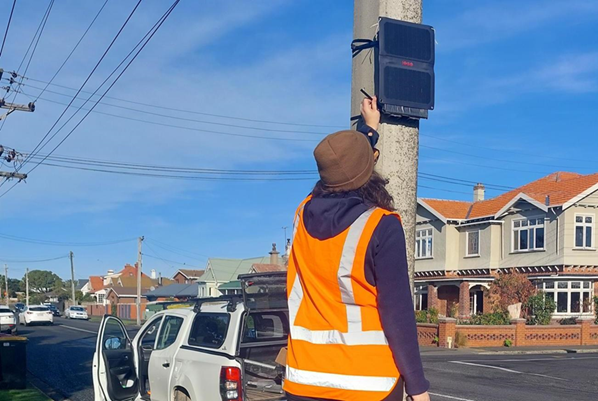Air quality improving across Otago
Aimee Wilson
16 June 2024, 5:15 PM
 The inversion layer over Alexandra from outdoor burning. PHOTO: Supplied
The inversion layer over Alexandra from outdoor burning. PHOTO: SuppliedPeak average particulate matter (PM) concentrations across Alexandra from wood burners in the north-west area of the town tend to be double that of other areas, a report from NIWA and Otago Regional Council (ORC) shows.
NIWA conducted a spatial study in Alexandra in 2023 using 42 temporary sensors, to understand more about the variation in PM concentrations across the town.
The sensors measure particulate matter (PM2.5) from combustion-related sources, such as wood burners, industry, and traffic.
The data gathered gives a better idea of where PM2.5 concentrations are highest and at what time of the day the peak concentrations occur.
NIWA released its findings to the ORC, outlining the current state of the environment, and found that the higher concentrations in the north-west corner were likely due to topography and wind pattens in Alexandra.
A possible new monitoring site and origins of the concentrations are being investigated, as well as data from the current and previous site being analysed.
ORC also ran a number of spatial studies last year in Oamaru, South Dunedin, Hawea, Ranfurly, Luggate and Kingston, using temporary sensors to understand more about the spatial variation of particulate matter.
The information from these studies can be used to help identify potential future locations for further monitoring.
The annual report also noted improvements being made to the state of the environment monitoring network to include monitoring for PM2.5 particles, which are smaller and therefore can be harmful to health.

An air quality monitor being installed in South Dunedin. PHOTO: Supplied
Recent research provides evidence that air pollution is dangerous at lower concentrations than previously thought and supports the lowering of existing guidelines.
Upon validating last year’s winter data, Otago recorded only 17 exceedances of PM10 (particulate matter with a diameter of less than 10 micrometres) during the winter months.
Otago has several towns where air quality is considered degraded during winter, namely Alexandra, Arrowtown, Clyde, Cromwell, and Milton.






